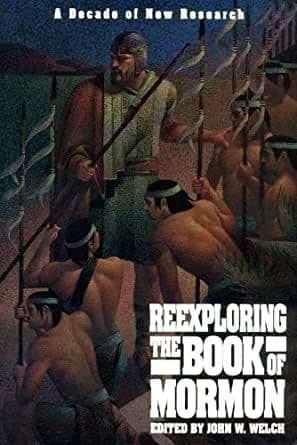Book
85 Chapters

William J. Hamblin
1 Nephi 16:23 “I, Nephi, did make out of wood a bow, and out of a straight stick, an arrow.”
Most readers of the Book of Mormon remember vividly the story in 1 Nephi 16 of the slack and broken bows. The account is interesting and well told. Imbedded in this memorable narrative are several long-overlooked points that only now drive home the fact that Nephi’s account is right on target.
The symbolic message of the broken bow, first detected by Alan Goff, was highlighted in the March 1984 issue of the F.A.R.M.S. newsletter: “Bows were symbols of political power. One thinks of Odysseus bending the bow to prove himself. An overlord would break the bow of a disobedient vassal to symbolically put the rebel in his place” (see also Jeremiah 49:35; 51:56).1 That detail is significant in 1 Nephi 16. Nephi’s bow broke, and the bows of Laman and Lemuel lost their springs, but when Nephi fashioned a new bow, making him the only one in camp with a bow, his brothers soon accused Nephi of having political ambitions (see 1 Nephi 16:37-38).
Once this point was detected, a further authentic detail about this particular account was soon noticed. It has to do with Nephi’s arrows. Three times in his record, Nephi mentioned that he had broken his bow, but not once did he say that any of his arrows were damaged. Yet in 1 Nephi 16:23, Nephi says that he “did make out of wood a bow, and out of a straight stick, an arrow.” Why would he need to make a new arrow if his old ones were still intact?
David S. Fox, in a letter to F.A.R.M.S., suggests an answer: “An examination of Nephi’s account shows that whoever wrote that account was familiar in some detail with the field of archery.” Consider what happens to an arrow at the instant the string is released: the full force of the drawn string is applied to the end of the arrow, trying to accelerate it, but also tending to bend or buckle the arrow. If the bow’s draw weight and the arrow’s stiffness are not perfectly matched, the arrow will stray off the intended course or fall short of the mark. An arrow that is too flexible will leave the bow with a vibration that can cause the arrow to behave erratically. On the other hand, an arrow that is too stiff is probably too heavy for the bow.
Nephi’s steel bow likely used heavier, stiffer arrows than his simply fashioned wooden bow could handle. Nephi was physically large (see 1 Nephi 2:16; 4:31), and he would have had little reason to use a bow made from metal if he did not have considerable strength. The arrows to match the steel bow used by such a man would undoubtedly have been quite heavy in order for them to be of adequate stiffness. One experienced archer reports, “The arrows from the steel bow when shot from the wooden bow would be like shooting telephone poles.” Hence, it is accurate that Nephi should mention, in one and the same breath, the fact that he made an arrow as well as a bow. Bow wood and arrow wood from the same tree or area could be matched as well.
One doubts that such information was known to Joseph Smith or to many, if any, of his contemporaries. Archery, as a means of self-defense or as a serious method of hunting or warfare, went out of vogue among Europeans many years before the time of Joseph Smith. On the other hand, archery as a sport did not emerge until the latter half of the nineteenth century.
David Fox concludes: “Nephi’s statement that he made an arrow out of a straight stick is an additional subtle but significant example of internal consistency within the Book of Mormon. Anyone unfamiliar with the field of archery would have almost certainly omitted such a statement.” Another bull’s-eye for the Book of Mormon.
The publication of this Update in July 1984 has continued to spark interest. Most recently, William Hamblin has written at length on “The Bow and Arrow in the Book of Mormon,” in Stephen Ricks and William Hamblin, eds., Warfare in the Book of Mormon (Salt Lake City: Deseret Book and F.A.R.M.S., 1990), 365-99. Hamblin concludes that the length of Nephi’s old arrows may have been another, perhaps even bigger, problem than their weight or stiffness.
1. This newsletter article announced the reprint of Nahum Waldman, “The Breaking of the Bow,” Jewish Quarterly Review 69 (October 1978): 82-88, which was introduced by Alan Goff and John W. Welch and entitled “The Breaking of the Bow” (F.A.R.M.S. reprint, 1984).
Book
85 Chapters
Items in the BMC Archive are made publicly available for non-commercial, private use. Inclusion within the BMC Archive does not imply endorsement. Items do not represent the official views of The Church of Jesus Christ of Latter-day Saints or of Book of Mormon Central.